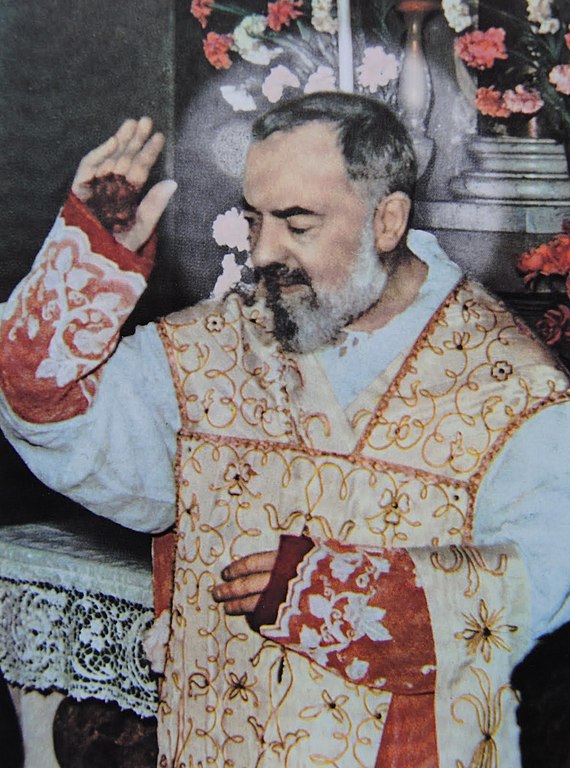 The new Padre Pio film, starring actor and recent Catholic convert, Shia LaBeouf, contains some troubling content that viewers may find offensive.
The new Padre Pio film, starring actor and recent Catholic convert, Shia LaBeouf, contains some troubling content that viewers may find offensive.
The movie, Padre Pio, is a biographical drama directed by Abel Ferrara and starring Shia LeBeouf as Padre Pio. The film premiered in Venice in September of 22 and opened in the United States on June 2, 2023. It is rated R for nudity and language.
But there are other issues that moviegoers may want to consider before watching this movie.
According to the podcast, Criteria, hosted by Catholic Culture’s Thomas V. Mirus and James T. Majewski, the movie contains a particularly offensive scene in which the devil is attacking Padre Pio in a way that involves an image of Our Lady.
“The film is portraying Padre Pio’s inner trials in various ways…there’s a scene where the devil appears as a naked woman who is lasciviously kissing an icon of Our Lady,” Mirus describes.
“While the film’s portrayal of Padre Pio is a very sincere one and Padre Pio is not himself implicated in immorality in any way by this scene. It’s an attempt to portray the perversity of evil and the devils’ temptations…”
However, in his opinion, depicting this scene so graphically crosses a moral line, regardless of whether or not the director was using some genuine information from the Capuchins who were consulted on the film.
“What the director has essentially done, I would assume unintentionally to be charitable, is the same thing that the devil would have done to Padre Pio, the director now has done to his viewers” by depicting the scene so explicitly.
Kathy Schiffer, writing for Catholic World Report, also referred to this scene as one of the reasons why some believe Catholics should not watch the film.
“There is also the strong language: The men of San Giovanni Rotondo, the women, the soldiers, the priests – even Pio himself — carelessly toss about the ‘F’-word,” Schiffer writes.
“This, combined with the violence in Padre Pio’s interaction with the demons, the nudity in one demonic temptation, and the bloody massacre of townspeople, earned the film’s ‘R’ rating.”
Equally disturbing was the disjointed narrative between the plot involving Padre Pio’s life and the story of the social and political upheaval in Italy at the end of World War II.
“First, there is the life of Padre Pio – from his arrival at the mountain monastery, to his earnest prayers, to his strident warnings to penitents who seek forgiveness for their sins. But there is the secondary story of the town of San Giovanni Rotondo…Competing factions struggled for dominance in the Italian town, arguing for or against socialism and workers’ rights. The fervor of the citizens is met with a strong resistance, and the ensuing bloody conflict costs the lives of thirteen citizens,” Schiff writes.
Rather than merge these two stories together, “the viewer is jerked back and forth between them” with the connection being neither strong enough nor clear enough to achieve the desired effect. Instead, it comes off as two stories under one title with no meaningful connection between them.”
She found the most inspiring scene in the film to be at the very end when Padre Pio receives the stigmata “when Jesus’ nail-pierced hand reaches affectionately over Padre Pio’s shoulder. And Pio, empathetic as he reflects on the suffering which Christ endured, is himself marked by the stigmata.”
However, “If you hope to walk away from this movie inspired or uplifted, you may be disappointed,” she concludes.
Padre Pio is currently showing in limited release in 25 select theaters, and is available for rent via streaming services including Netflix, Amazon Prime, VUDU and Google Play.
© All Rights Reserved, Living His Life Abundantly®/Women of Grace® http://www.womenofgrace.com









